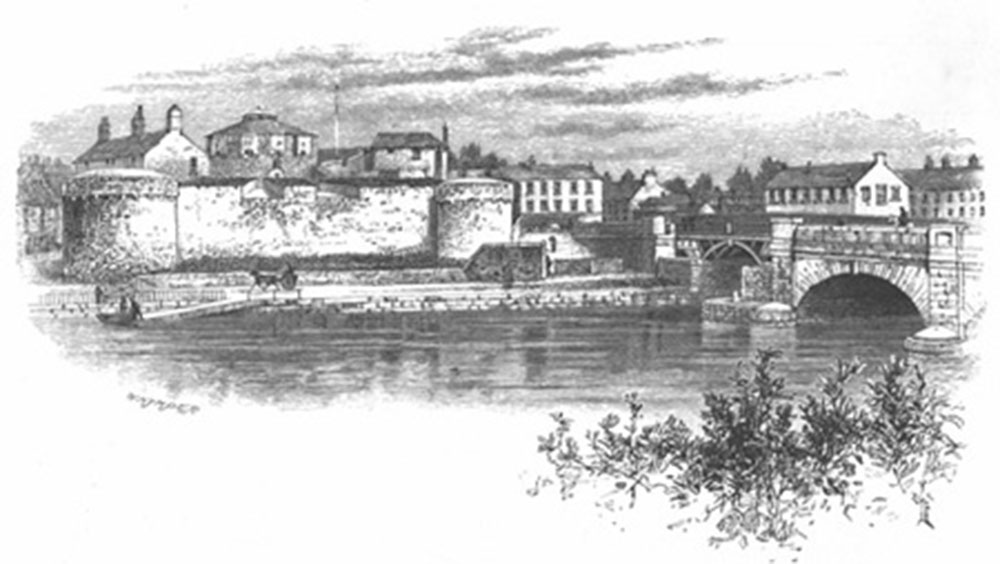The Shannon - Irish Pictures (1888)
From Irish Pictures Drawn with Pen and Pencil (1888) by Richard Lovett
Chapter VI: The Shannon
« Previous Page | Book Contents | Next Page »
IRELAND is exceedingly rich in rivers and loughs. The traveller marvels, first, at the extent and beauty of these natural high-roads, and, secondly, at the comparatively slight use made of them for traffic and commerce. In Queenstown Harbour, near the port of Moville, in Lough Foyle, in Belfast Lough, and in Dublin Harbour, there are signs of a busy shipping trade. But even these splendid harbours do not impress the observer as being in any degree embarrassed by its quantity. And, on the other hand, such arms of the sea as Carlingford Lough, Donegal Bay, Galway Bay, and, above all, the estuary of the Shannon—waterways which many a land would be only too glad to possess and to utilise—are nearly devoid of shipping. The sail from Limerick to Kilrush fills the visitor with amazement. He rejoices in the size of this Irish Mississippi, and in the fine old ruined castles, and the lovely views to be seen along the banks. But while the steamer glides down the stream hour after hour, and few, if any, vessels pass it on their upward way, he is led to marvel how and why it comes to pass that such a superb channel is so conspicuously deserted. Nature has enriched no other European countries with such magnificent waterways, only to see them comparatively unused.
Ireland also compares favourably with England in her rivers. England can well hold her own in scenery; but it is doubtful whether she can show river country equal in beauty to the Avonmore, the Blackwater, the Barrow, the Suir, the Nore, the Boyne and its branches. However this may be it is certain that no river in England equals the Shannon, either as an estuary, or in extent, or in the interest attaching to the towns and districts along its course. We propose in this chapter to trace the course of the great stream from the source to the ocean, visiting the more famous places and districts as we pass.
The Shannon is 240 miles long, and it drains 4,544 square miles of country. It is navigable for large vessels as far as Limerick, that is, some sixty miles up from the mouth, and the greater part of its course, a total distance of 234 miles, is available for small vessels. The source, according to the popular account, is a limestone cauldron, known as 'The Shannon Pot,' situated in a mountain valley in Cavan, having on the west the Lurganacallach Mountain, and on the east Cuilcagh Mountain. But Professor Hull asserts that experiment has proved the real source to be 'a little lough, situated about a mile from the Shannon Pot, which receives considerable drainage from the ground surrounding it at the base of Tiltibane, but has no visible outlet. The waters from the little lough flow in a subterranean channel till they issue forth at the so-called source of the Shannon.' The river flowing in a southerly course is reinforced by the Owenmore River, a considerable stream with several affluents which drains the valley between Guilcagh and Slievenakula Mountains, and which has itself a fair claim to be considered the real headwaters of the Shannon. The combined streams soon leave Cavan and flow through Leitrim, broadening out into Lough Allen, the first of a series of fine sheets of water along the course of the river.

